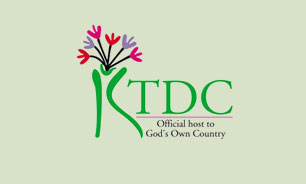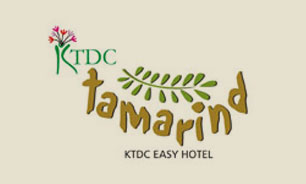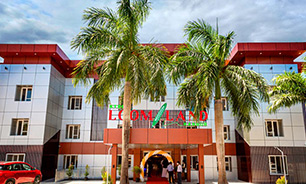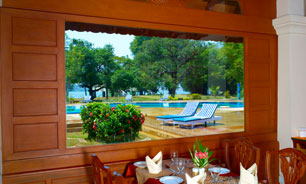Mascot Hotel
Category: Premium Heritage Business Hotel
Attractions
A. Nearby and within the city
Kerala Legislature Complex: Located at Palayam, the building where the Legislative Assembly of Kerala meets is a beautiful blend of classical and modern splendour. Situated behind the Legislative Assembly complex, the Legislature Museum throws light into the political history of the State.
Science and Technology Museum Complex: The museum houses galleries on electricity, electronics, power & motion, mechanics, popular science, mathematics, solar energy as well as automobile, computer and biomedical engineering.
Priyadarshini Planetarium: Opened in 1994 to the public, this is one of the most versatile planetariums in the country. The main GM-11 star field projector here can project almost all the constituents of the visible universe. It can also simulate the star-studded night sky over any location on the earth, on any day up to 12,500 years back or 12,500 years into the future.
The Napier Museum: Built in the 19th century, this Indo-Saracenic structure boasts of a natural air conditioning system and houses a rare collection of archaeological and historic artefacts, bronze idols, ancient ornaments, a temple chariot and ivory carvings. The Javanese shadow play leather figures, used to depict the epics of Mahabharata and the Ramayana, would be interesting to visitors.
Sree Chithra Art Gallery: Opened in 1935 by the then Maharaja of Travancore, Sree Chithira Thirunal, displays original paintings of Raja Ravi Varma, Svetlova and Nicholas Roerich; exquisite works from the Rajput, Mughal and Tanjore schools of art in India as well as paintings from China, Japan, Tibet and Bali. The collection also includes unique copies of Indian mural paintings from pre-historic times down to the 18th Century.
Sree Chithra Enclave: Opened in 1993, this museum depicts the history of the Travancore Royal Family and displays their personal belongings and artefacts. Old newspaper footages and deeds describing events are also exhibited.
KCS Panicker Gallery: Nominated as one of the nine eminent artists of India, Kerala's renowned painter Panicker was born in 1911. He was instrumental in setting up the Progressive Painters Association in Madras from 1944 to 1953. Panicker set a new trend in Indian painting and the gallery traces his works over a period.
Natural History Museum: The Museum houses some excellent galleries like the skeletal, bird, animal and taxidermy gallery as well as a museum.
The Zoological Park: One of the first zoos in India, it was established as early as 1859. A reptile house with different species of snakes and a vulture house are also situated within the premises. Plastic is banned inside the park.
The Kanakakkunnu Palace: The palace and its sprawling grounds are today the venue for cultural meets and programmes.
St. Joseph's Cathedral, Palayam: This125-year-old cathedral is an important worship centre of Catholics and a prominent landmark in the city.
VJT Hall: Built to commemorate the golden jubilee of the coronation of Queen Victoria in 1896, the VJT Hall was inaugurated by the then ruler of the erstwhile Travancore Kingdom Sree Moolam Thirunal Rama Varma on January 25, 1896. The hall has witnessed several historical events. Perhaps the most preferred venue for public functions in the city, this towering monument is a proud remnant of the colonial era.
Padmanabha Swamy Temple: Located inside the East Fort, this temple dedicated to Lord Vishnu, is a blend of the Kerala and Dravidian styles of architecture. One among the 108 sacred Vishnu temples in India, the presiding deity here is Lord Vishnu reclining on Anantha, the Serpent. The idol, plated in gold and made out of a rare composition known as katu-sarkara-yogam, is acclaimed as a marvel. It is also noted for its mural paintings and stone carvings.
Meshan Mani: On the eastern side of Padmanabha Swamy Temple, installed in 1833 during the reign of Swathi Thirunal, is the Meshan Mani (clock). It has on its dial, a man's face with two goats on either side. Crafted from mahogany by an artisan called Kulathooran, every time the clock completes an hour, the man opens his mouth and the goats hit his cheeks.
Kuthiramalika (Puthenmalika) Palace Museum: The palace was built by Maharaja Swathi Thirunal Balarama Varma - the King of Travancore, who was a great poet, musician, social reformer and statesman. This rare specimen of workmanship in the traditional Travancore style of architecture has exquisite wood carvings. The palace museum displays paintings and various priceless collections of the royal family and is located near the Padmanabha Swamy Temple.
CVN Kalari: The most famous amongst the many Kalari centres, CVN Kalari has its own Ayurvedic clinic. Located near the Padmanabha Swamy Temple, here Kerala's ancient martial art, Kalarippayattu is taught.
Shankhumugham Beach: This place is a favourite haunt of sunset watchers. An indoor recreation club, the matsya kanyaka (a gigantic, 35-m long sculpture of a mermaid) and a restaurant shaped like a starfish are some of the attractions here. The Chacha Nehru Traffic Training Park here gives children the opportunity to learn traffic rules.
Akkulam Tourist Village: A picnic spot with boating facilities, Akkulam is a place children flock to. It has a well-equipped children's park, a paddle pool and a swimming pool for adults as well.
Veli Tourist Village: This picnic spot, where the Veli Lake meets the Arabian Sea, offers boating facilities. Pedalboats and paddleboats can be hired to explore the charms of the lagoon in a leisurely manner. For a quick ride over the waters, speed boats are available for hire. Children can also enjoy climbing over the huge sculptures which dot the landscape.
Valiathura: Located near Shankhumugham, this was once the only port along the South Kerala coast. During monsoons, fishermen carry their catamarans to the edge of the Valiathura Pier which is 703 ft long, throw them into the sea, then jump in and swim and board them.
Beemapalli: An important place of worship, the Beemapalli Dargah Shareef is dedicated to Beema Umma, a pious Muslim woman who was believed to possess great spiritual powers. The Chandanakudam Festival at Beemapalli, lasting for 10 days, is one of the most colourful events.
Samudra Beach: This beach is very close to the Samudra Hotel and borders it. It provides a calm and serene beach atmosphere.
Parasurama Temple, Thiruvallam: This 2000-year-old temple on the banks of the River Karamana, is the only one in Kerala dedicated to Sree Parasurama, the mythological creator of the State. This temple is a venue for propitiating ancestors. As part of the Bali ritual, devotees make offerings to the souls of the departed, after taking a dip in the nearby river.
Kovalam: Just a short drive away from the State capital, Kovalam is easily accessible. Internationally acclaimed, this seaside destination comprises three adjacent crescent-shaped beaches. Golden sands, miles of shimmering sea, rocky promontories constantly caressed by the sensuous surf and a brilliant sunshine warming the very souls, make this place truly sensational. A charming village of yesteryears, Kovalam today has all the amenities of a popular beach destination.
Kovalam Beach: Fringed by headlands that rise steeply above the shore, Kovalam is almost completely covered by coconut palms. Of the three small bays separated by rocky outcrops, the southernmost, known as the Lighthouse Beach, is the most popular. The lovely old lighthouse that gives the beach its name is the Vizhinjam Lighthouse. Edakallu, a rocky headland separates Eve’s or Howah Beach from the Lighthouse Beach. The hill that separates Howah Beach from the third of Kovalam’s celebrated beaches houses the Government Guest House and the Halcyon Castle, a palace.
Lighthouse: The 35 m lighthouse is perched atop the palm-covered Kurumkal Hill jutting out on to the sea. Visitors can climb the spiraling staircase inside to the top of the red and white tower and enjoy a spectacular view of the surroundings.
B. Day Trips
Koyikkal Palace, Nedumangad (about 30 km): This ancient palace dates back to the 15th century. Museums of folklore and numismatics are set up here.
The Folklore Museum here is a treasure trove of quaint musical instruments, occupational implements, household utensils, models of folk art etc. displayed in the Koyikkal Palace, they focus attention on the cultural background of the State.
In the Numismatics Museum housed in the palace, one can see coins from different parts of the world as well as of different eras. The rare and historically valuable collection of coins gives an insight into the trade relations of the State. Among the exhibits is the most valuable Indian coin – the 2500-year-old Karsha and Rasi, as also world’s smallest coins.
On the way to Koyikkal Palace one can take deviation to visit the Aruvikkara Dam which supplies drinking water to the city of Thiruvananthapuram. The dam site offers excellent panoramic view of the surrounding landscape.
Neyyar Wildlife Sanctuary (about 30 km): The sanctuary has a picturesque dam site serving as its gateway. The dam premise is a popular picnic spot, which comes with a watch-tower, crocodile farm, lion safari park and deer park. Boating facilities are available at the reservoir. The elephant rehabilitation centre at Kottoor is also situated nearby.
Ponmudi (about 60 km): An idyllic hill station, Ponmudi is at a height of 915 m above sea level. Along with a variety of beautiful mountain flowers, exotic butterflies, small rivulets, springs and wildlife, this hill destination offers excellent trekking trails and camping opportunities. The tree house view tower is another attraction at Ponmudi. Visitors to Ponmudi can also enjoy the excellent facilities and services available at the premium resort of KTDC.
On the way to Ponmudi one can also visit Kallar Valley eco-tourism spot.
Varkala (about 55 km): Varkala, a calm and quiet hamlet, lies on the outskirts of Thiruvananthapuram district. It has several places of tourist interest like the beautiful beach, reddish laterite cliffs overlooking the beach and a 2000-year-old Vishnu temple. The fresh water mineral spring originating from the crevices of the cliffs is considered as holy and having high medicinal value. Such a phenomenon is considered very rare near a beach.
A dip in the waters at this beach is believed to purge the body of impurities and the soul of all sins and hence it is called 'Papanasam beach'. The Janardhanaswamy Temple stands on the cliffs overlooking the beach, at a short distance away.
The Sivagiri Mutt, founded by the great Hindu reformer and philosopher Sree Narayana Guru (1856 - 1928) is also close by. The Samadhi (the final resting place) of the Guru here attracts thousands of devotees every year during the Sivagiri pilgrimage days – 30th December to 1st January. Sree Narayana Guru propagated the ideology: "one caste, one religion and one god for mankind", in a society torn by the taboos of caste system. Varkala offers excellent accommodation facilities for tourists and is a popular destination.
Thenmala Eco-Tourism (about 70 km): Covered by dense forests, rubber and tea plantations, Thenmala was selected by the World Tourism Organisation as one of the world’s best eco-friendly projects. It has a leisure zone with winding pathways, sway bridge, sculpture garden and boardwalk; culture zone with an amphitheatre, musical fountain as well as Nakshatravanam (a nursery of trees considered sacred to the 27 constellations, located inside one of the zones where visitors can also buy saplings of the tree relevant to their birth star.) The adventure zone offers options for trekking, birdwatching, mountain biking, rock climbing, rappelling and river crossing. There is a Deer Rehabilitation Centre as well as the Shenduruney Wildlife Sanctuary. A major attraction is the boating in the reservoir, inside the Shenduruney Wildlife Sanctuary.
Kanyakumari (about 90 km): At the southernmost tip of India, where the Arabian Sea, the Indian Ocean and the Bay of Bengal meet, lies Kanyakumari, an important pilgrim center. Kanyakumari is famous for watching spectacular sunrises and sunsets, especially on full moon days. The beach itself is a beautiful sight with multi-colored sand. There is a lighthouse from where one can have a panoramic view of the surroundings. The Government museum offers a good collection of sculptures of Tamil Nadu.




